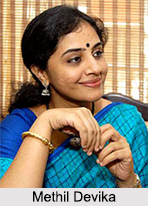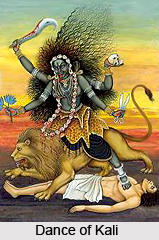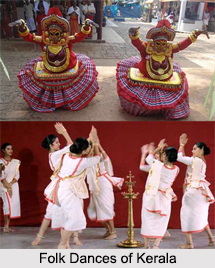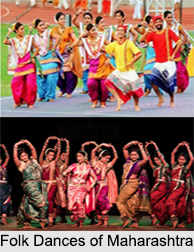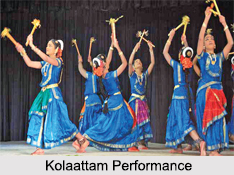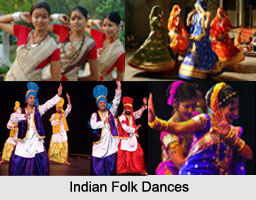 Folk dances of Medinipur district aim at portraying the different dance forms of Medinipur which is again the reflection of the common mass culture. There are two types of folk dances in Medinipur. Firstly, folk dance accompanied with lyric (geet), secondly, folk dance without lyric or geet. Kathi nach, Rumal nach, Jhumur nach, and these types of nach (dances) are included in the first category and largely found in Jhargram region. Gajaner nach (sometimes with lyric), Chhau nach and Ranpa nach are of second category. Among these types of dances, Chhau dance should be given special discussion.
Folk dances of Medinipur district aim at portraying the different dance forms of Medinipur which is again the reflection of the common mass culture. There are two types of folk dances in Medinipur. Firstly, folk dance accompanied with lyric (geet), secondly, folk dance without lyric or geet. Kathi nach, Rumal nach, Jhumur nach, and these types of nach (dances) are included in the first category and largely found in Jhargram region. Gajaner nach (sometimes with lyric), Chhau nach and Ranpa nach are of second category. Among these types of dances, Chhau dance should be given special discussion.
Folk Dances of Medinipur District are as follows:
Kathi Dance: The Kathi Dance had earlier served as the revival of Bengal culture but however as time passed it is celebrated for mere amusement and joy of the performers and the audiences. The dances are performed with the accompaniment of the songs that bear the stories of the daily occupations of villagers. The Kathi Dance is the exclusive art of the members of the lower castes. The dance exhibits the skilful exposition of the rhythmic foot-work which is accompanied by the beating of sticks by the performers. The rhythm of the dance is maintained by performing for long periods. The dancers form several postures threaded by the feet following a rough outline of a circle. The dancers first pair with their right neighbours and then with their left neighbours subsequently forming and reforming the circle. While dancing the performers beat the sticks ceaselessly in a rhythmic tone in accompaniment of the moving of the feet.
Purulia Chhau: The Chhau dance of Purulia district is one of the most vivacious and colourful art forms. Budding from martial tradition, the Purulia Chhau is an energetic form of dance drama that draws its themes from the two big Indian epics, The Ramayana and the Mahabharata. Masks and elaborate hood are the ornamental apparels of the Chhau dancers. The dance is believed to date back to over a century, though the specific date of its origin cannot be absolutely ascertained. The dance was patronised by the sovereigns and landlords of the region.
Chang-Dance: It is usually held during worship, marriage and sometime during funerals also. A daffli like musical instrument is `changu` made from karat tree is needed at the time of dancing. 5 to 7 Lodha male artists take part in it. They dance in around from evening to mid-night amid the jungles.
Jhumur: Jhumur has a main attraction of music and folk dance. Jhumur has earned a place in the king`s palace. Primarily West Bengal and South-eastern Kings of Purulia, kings of Chilkigarh has placed Jhumur in high esteem. Because of this Jhumur has earned a particular Gharana. It comes from Chatonagpur plateau. But apart from this Jhumur has an informal place in the hearts of the people.
Tusu Dance: Tusu is a folk dance performed mainly in-group. It is performed by both men and women. This is tribal dance performed in the crop celebration to celebrate the coming Crop. It is well-liked in Purulia and Medinipur.
